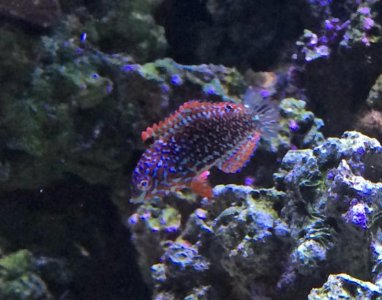CedzAquAddictio
New member
even though they can disappear behind the live rock or in a nook or cranny I also have never had one just die under the sand bed . for some reason they always seem to get enough energy to come out from under the sand bed before dying
don't know how or why
This is my experience as well. My potters took a whole day to emerge to die. She went into the sand for two days, and I awoke to her head sticking out. She was still breathing when I went to work and when I went to bed (still with only her head sticking out of the sand). The next morning, she was completely out of the sand. By the time I finished my shower, and headed to work, she was dead...
I still have a tamarin wrasse that has been in the sand for a week now. I check for ammonia every other day to see if I have a spike from her dead body, but haven't seen any sign of ammonia, so I'm hopeful she's still alive under the sand...





